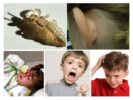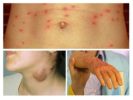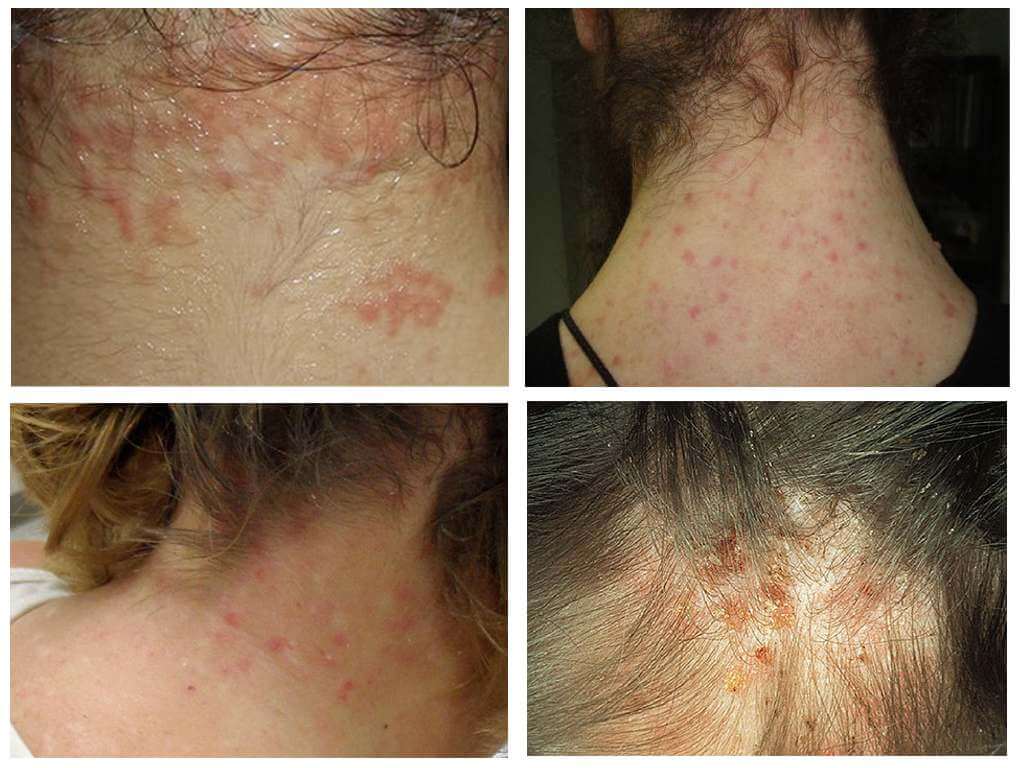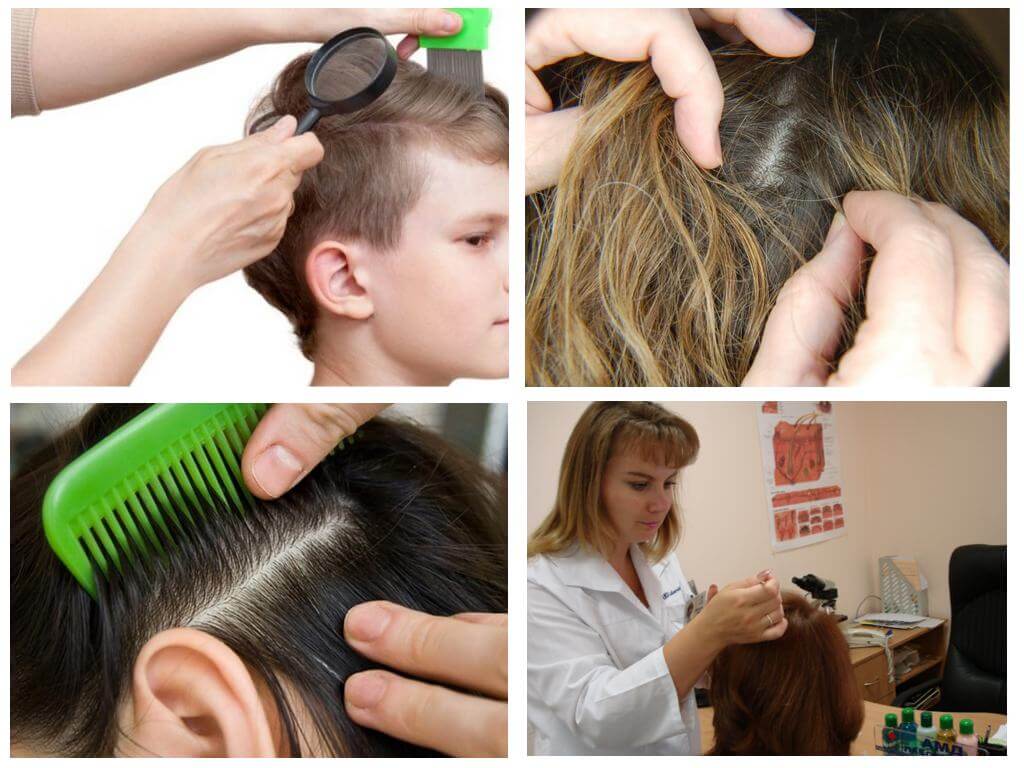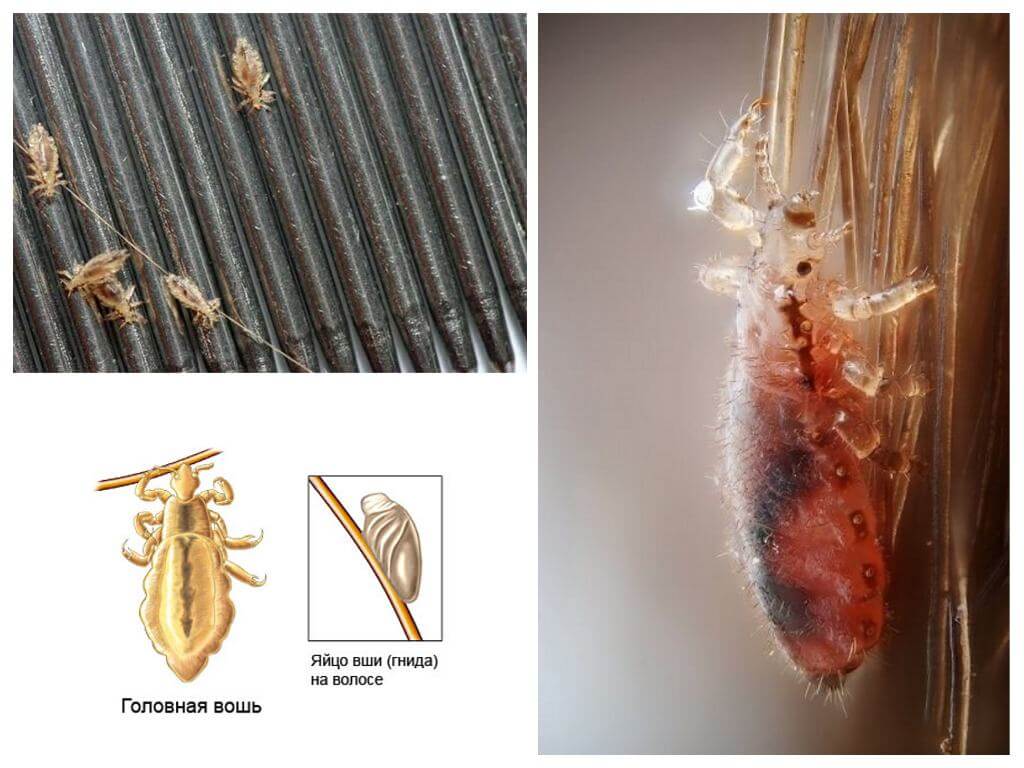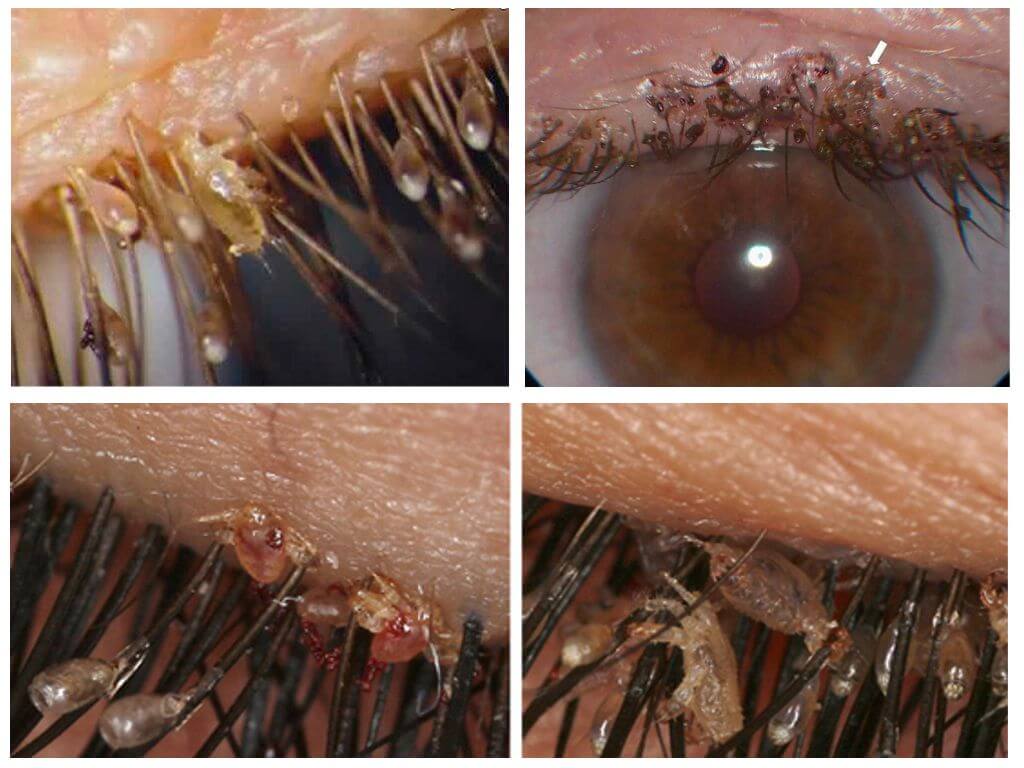- Discomfort from lice
- Danger of pediculosis
- Lice Disease
Lice They are perceived as harmless and unpleasant insects, which are dangerous only because they cause itching in places of bites. But blood-sucking parasites are able to tolerate severe infectious diseases, provoke an allergic reaction, cause coarsening of the skin. It is worthwhile to understand why lice on the head are dangerous for a person and whether it is worth fearing insects parasitizing on other parts of the body.
Danger to the child
Children are more severely affected than adults. head lice. Their fragile body is susceptible to disease and more often allergic to irritating factors.
Interesting!
Even a newborn baby can become ill with pediculosis. Given how lice are transmitted, parasites can be transmitted to him by his mother or older sisters and brothers.
What is dangerous pediculosis in children:
- disturbing sleep;
- leads to impaired concentration of attention;
- makes the child restless;
- provokes the appearance of purulent wounds.

The disease prevents children from concentrating on their studies. They become moody, often cry and complain of dizziness and severe itching. Unpleasant sensations can persist up to three days after the removal of insects.
Pediculosis in sensitive and vulnerable children can lead to fears:
- fear of insects - entomophobia;
- fear of parasites - parasitophobia.
It may seem to a small person that someone is crawling on his skin, and any insect will begin to cause a panic attack.
Children under three years of age with lice can react with fever, nausea and swollen lymph nodes. The waste products of insects provoke the appearance of allergies.
Danger to an adult
Adults are less likely to encounter lice, but this does not mean that pediculosis passes completely without a trace. The insect causes severe itching on the head and leads to scratching. The wounds themselves are not dangerous, but through them the infection easily enters the human body.
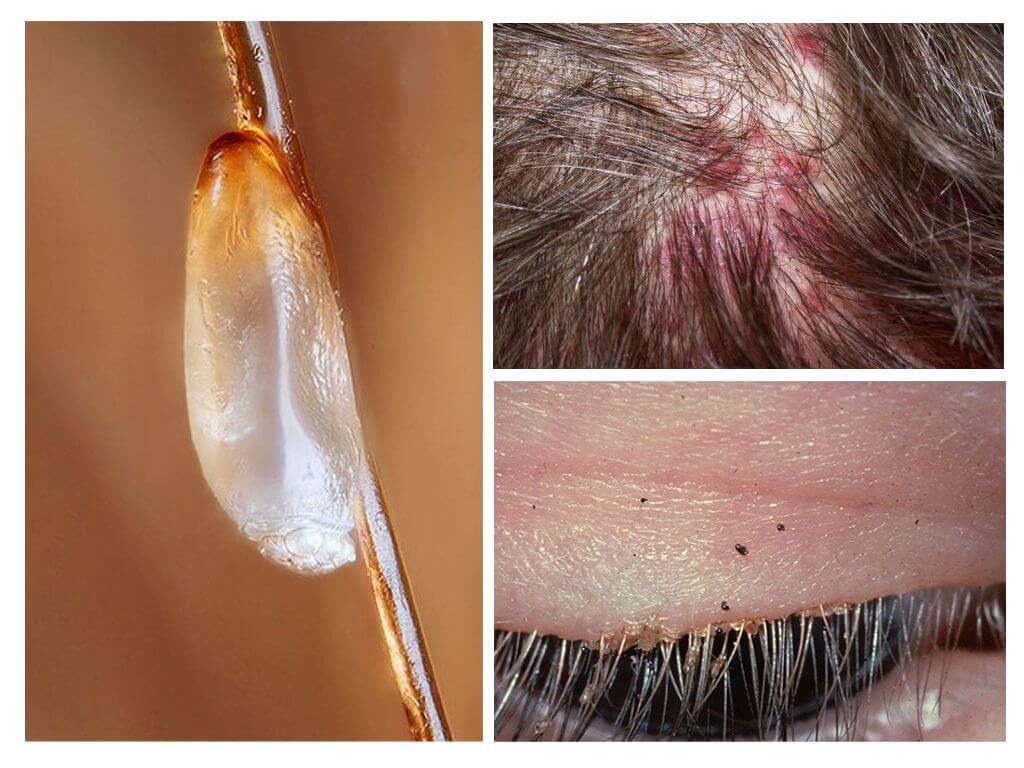
Insect nits are also not particularly dangerous. She only spoils the hair on her head and tangles it. Sometimes you have to cut your hair completely to get rid of lice and nits.
What is dangerous pediculosis for an adult:
- Roughness of the dermis. A louse injects a special substance into the wound that prevents blood from clotting. Lice bites in the same place cause the appearance of melanosis. The skin color changes, and the dermis becomes rough and begins to peel off. With constant combing, pus is released from the wound, which tangles the hair on the head and forms a crust, under which the wound dries.
- Allergy. Excrement of parasites falling into open wounds causes purulent inflammation of the skin, folliculosis, dermatitis, eczema. A person suffers from severe itching of the head. If untreated, the patient's condition becomes worse.
- Conjunctivitis. Living lice on a person’s head they cannot cause this disease. Eye inflammation appears due to pubic licethat settles on eyebrows and eyes.
Infection with lice prevents a person from leading an active life and communicating with other people. Pediculosis is easily transmitted, so the patient has to become a recluse before recovery.
On a note!
A louse settles even on a washed head, and you can catch head lice in public transport, a bath, a pool.
Cootie at night is the cause of intolerable itching. A person cannot sleep, suffering from painful bites of linen parasites. The head louse look causes severe discomfort after washing the hair.
Chronic lice
A disease can become chronic and poison a person’s life for a long time. The skin with chronic pediculosis becomes rough, acquires a brown tint and begins to peel off. Insect bites on the head merge into one spot, which extends beyond the hairline.
On a note!
Often with a chronic form of pediculosis on the human body several types of parasites parasitize at once.
The human body adapts to this type of pediculosis. Constant pruritus ceases to bother, but the risk of contracting a fatal disease increases significantly. In addition, lice get used to poisonous antiparasitic agents and getting them out is getting harder.
Lice on the head are also dangerous due to the fact that after several generations they can create a population of parasites living in clothes.
What diseases do lice carry?
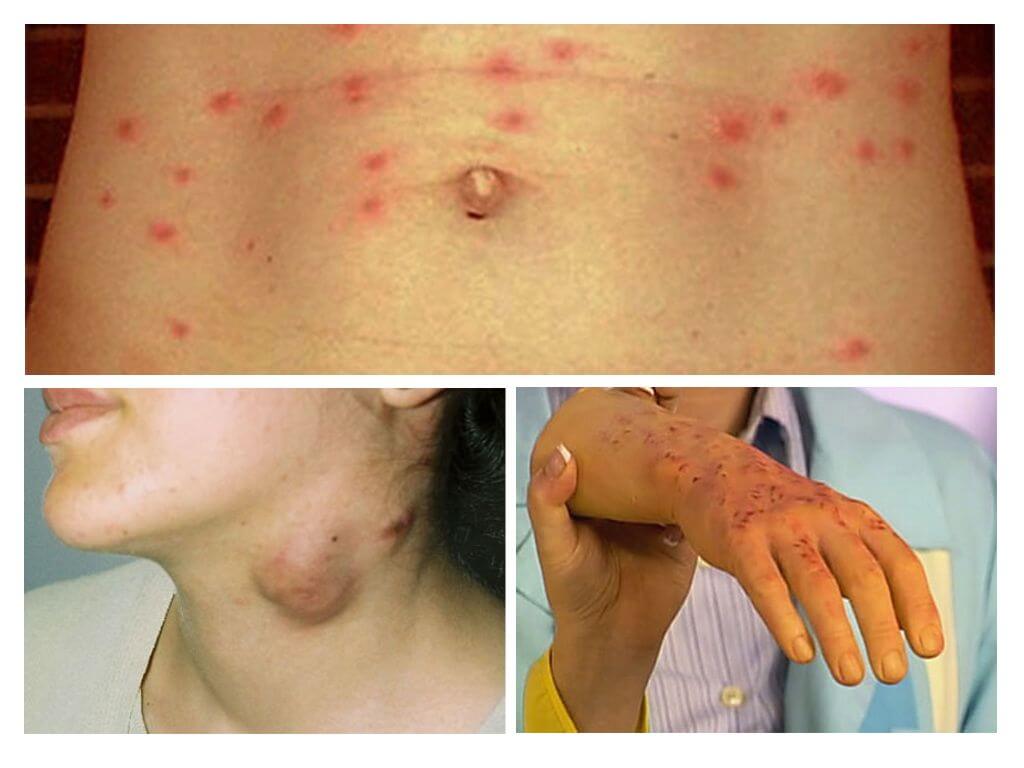
Blood-sucking parasites cause serious diseases. It is difficult to pick up a fever or typhoid from an insect, but no one can guarantee that this disease will not affect you.
Typhus
Rickettsia provokes the disease. Carriers may be lice living on their heads and clothing. The bacterium enters the human body through an open wound along with insect feces.
Typhus is manifested by the following symptoms:
- heat;
- lesions of the nervous system;
- fever;
- disruption of the heart and blood vessels;
- rash.
In civilized countries, disease outbreaks do not occur. But rickettsia is able to live in the human body for a long time. With deteriorating living conditions, it manifests itself. Pediculosis prophylaxis reduces the risk of typhus.
Relapsing fever
The disease causes borrelia. The bacterium enters an open wound after a bite of a blood-sucking insect. The pest living on the head does not tolerate the disease. A person becomes infected due to body lice.
On a note!
There is a vaccine against typhoid that protects the human body for several years. It is recommended to do to those who are going to go to India or Africa.
Symptoms of relapsing fever are as follows:
- fever;
- headache;
- severe joint pain;
- vomiting and nausea.
Borrelia secretes endotoxin, which damages the liver, nervous and circulatory systems. Bacterial antibodies cause microinfarction.
Quintan
Volyn fever is carried by a louse. The disease does not end with the death of a person, but this does not mean that it is not dangerous.
Symptoms of the disease are as follows:
- fever, which then subsides, then returns;
- chills;
- joint pain;
- Pain in the eyes.
Volyn fever lasts six weeks, and then passes.
Tularemia
The carriers of the disease are animals, but bloodsucking parasites can spread tularemia among people.
Symptoms of the disease look like this:
- chills;
- confusion of consciousness;
- heat;
- pain in the limbs;
- headache;
- dizziness.
Pediculosis negatively affects a person’s life. Therefore, if an insect is found on the head, you should consult a doctor who will prescribe an antiparasitic drug. Do not forget about prevention. Avoid communication with people at risk, use only your own comb, change bedding and underwear in a timely manner, wash your hair twice a week.
